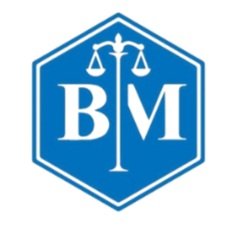A Step-by-Step Guide to Discrimination Claims
If you feel that you have been discriminated against at your place of employment, you should be aware of the three stages of a discrimination claim. It is important to remember that the burden of proof always remains with the employee. This means that you shoulder the “burden” of proving that the discrimination did, in fact, occur.
The first step requires the employee to establishing a prima facie case of discrimination. Once this initial burden is met, the burden then shifts to the employer. This requires the employer to provide a legitimate, non-discriminatory reason for their adverse decision related to your employment. An adverse decision could be so far as termination, but could also be a failure to promote, a suspension, or a demotion. Lastly, the burden shifts back to the employee to show that the non-discriminatory reason provided by the employer was pretextual. Pretextual means that the non-discriminatory reason provided by the employer was merely a front for their actual discriminatory reason for the adverse decision.
Employee’s Prima Facie Case
Prima Facie is Latin, and essentially means “at first sight”. In an employment discrimination context, the burden of the employee to establish a prima facie case is to show that “at first sight,” there is sufficient evidence to raise a presumption of discrimination. This must be met, even before an employer may state their alleged defense. To establish a prima facie case, the employee must show the following: (1) that the employee is part of a protected class, (2) that the employee was qualified for whatever they were denied (position, promotion, etc.), and (3) that that a person outside of the protected class was granted the position and/or promotion that this employee was denied.
For example, let’s take Janice. Janice, a female, applied for a position with the Employer A. Janice was never provided an interview, and later found out that Mike, a male with equal experience and training, was allowed to interview for the job. In the end, Mike was given the job and Janice was not. Janice would have a prima facie case of discrimination against Employer A because: (1) she is a female; (2) she was qualified and had equal experience/training as Mike; and (3) Mike, a male, was hired for the position instead of her.
Employer’s Legitimate, Non-Discriminatory Reason
Once a prima facie case is established, the burden shifts to the employer to provide a legitimate reason not based on the employee’s protected class for the adverse action. As the employer’s burden is only that of production, the employer is only required to provide a reason to the court with no need to back that reason with evidence. Because of this, employers can name any number of different reasons for the alleged adverse action, which would satisfy their burden of production.
Going back to the example above with Janice. Let’s say Janice files a claim against Employer A and has established the prima facie case. However, when the burden shifts, employer states that they didn’t hire Janice because they did not approve of her dreadlocked hair. Although it sounds like a silly reason, it is not discriminatory based on her sex and therefore, Employer A has met their burden of production.
Pretext
This stage of the case is by far the toughest for employees to prove. At this point, it is back on the employee to show that the employer’s conduct was motivated by discrimination based on their protected class. This can be done one of two ways. The first way occurs when the employee can establish that but-for their protected class, they would not have been subject to the adverse action. The second way occurs when the employee can establish that even though the employer’s non-discriminatory reason for the adverse action was a factor, unlawful discrimination was also a factor (this is commonly known as a mixed-motive).
Back to our example with Janice. After Employer A provides that they didn’t hire her because of her hair, Janice goes shopping at the same Employer A she applied to and finds that several of the employees at Employer A had similar hairstyles. When those employees were asked if they had dreadlocks at their hiring date, the men stated that they had. Additionly, Janice sees only one or two women during her entire shopping experience, while seeing a plethora of men ready to assist her. Janice’s attorney pulls the employee records at Employer A and finds that 95% of the employees are males. Moreover, the attorney determines that 24% of all of Employer A’s employees have dreadlocks in their hair. Based on the evidence, Janice would likely be able to show that but-for her sex as a female, Janice would have been hired for the position given to Mike.
Now, instead assume that when Janice went shopping that none of the employee’s had dreadlocked hair, but that the 95%/5% sex ratio still applies. Janice could attempt to show pretext in the fact that maybe the dreadlocks were a factor in Employer A’s failure to hire her, but another factor (if not the greater factor) was that she was a woman based on the makeup of the employees.
Unfortunately, showing pretext can be much harder than showing but-for discrimination. However, employees often find themselves a victim of mixed-motive adverse employment actions. Employment law cases are generally not so cut and dry when arguing in front of the Equal Employment Opportunity Commission.
If you find yourself a victim of wrongdoing in the workplace, it may be in your best interests to consult an employment attorney before taking legal action. At McLawhorn & Russell PLLC, we strive to provide employees the best possible options when taking a stand against unlawful employment discrimination. If you feel you have been discriminated against in your job, please reach out and speak to an employment attorney at McLawhorn & Russell.
